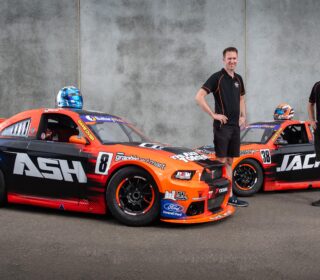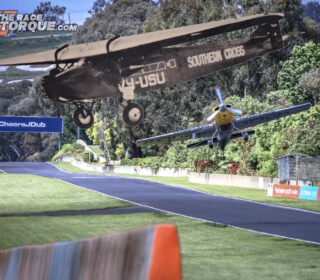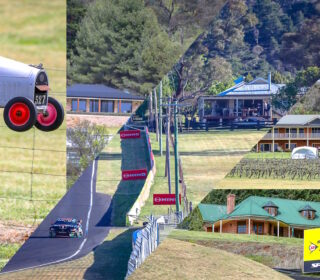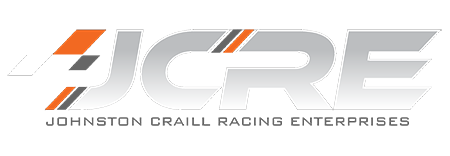Building a Motorsport Precinct: Willowbank Raceway
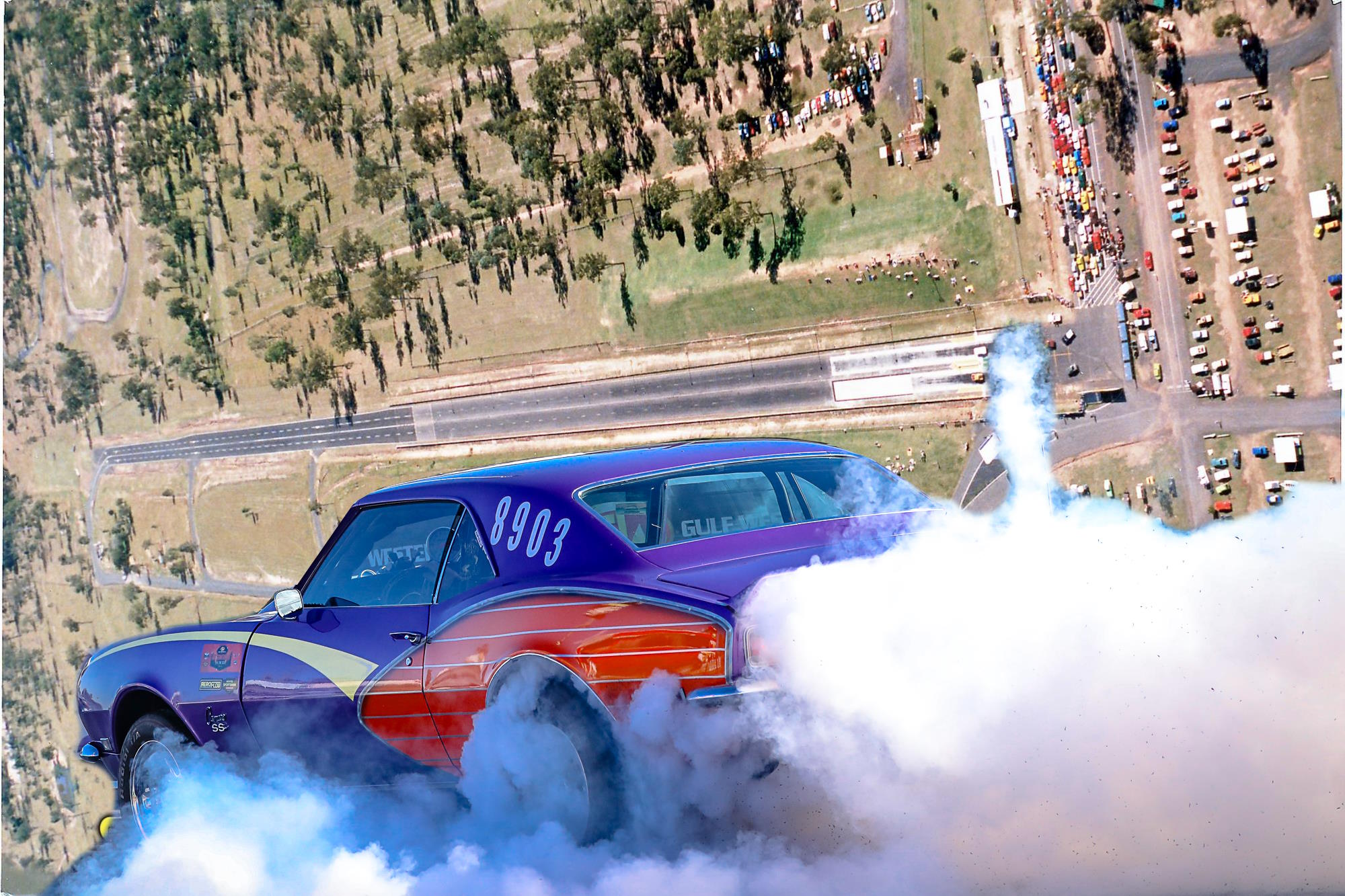
In the opening leg of our look back at the history of Queensland Raceway, we got the ball rolling by delving into the rich history of motorsport in the Ipswich area.
Many significant pioneering efforts, including multiple early motorsport efforts close to Willowbank, created an automotive culture that continues to this day.
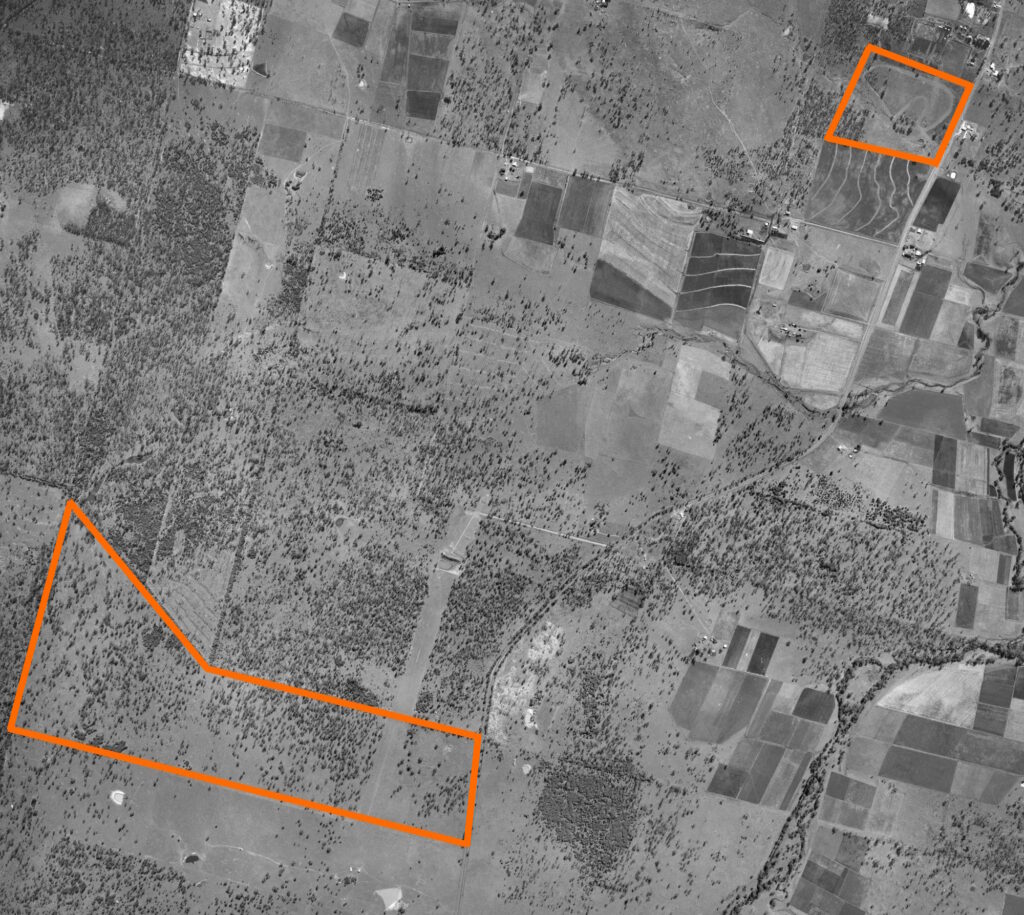
Willowbank’s original race track, Heit Park, is to the north, and the future site of the Ipswich Motorsport Precinct is to the south, connected by the Cunningham Highway. Photo from Qimagery in the mid-1950s.
Creating the Ipswich Motorsport Precinct
Some 4km further south along the Cunningham Highway from Heit Park, a parcel of land lay in waiting to become the blueprint for motorsport precincts nationwide.
However, the block’s original size and shape radically differed from what we know today.
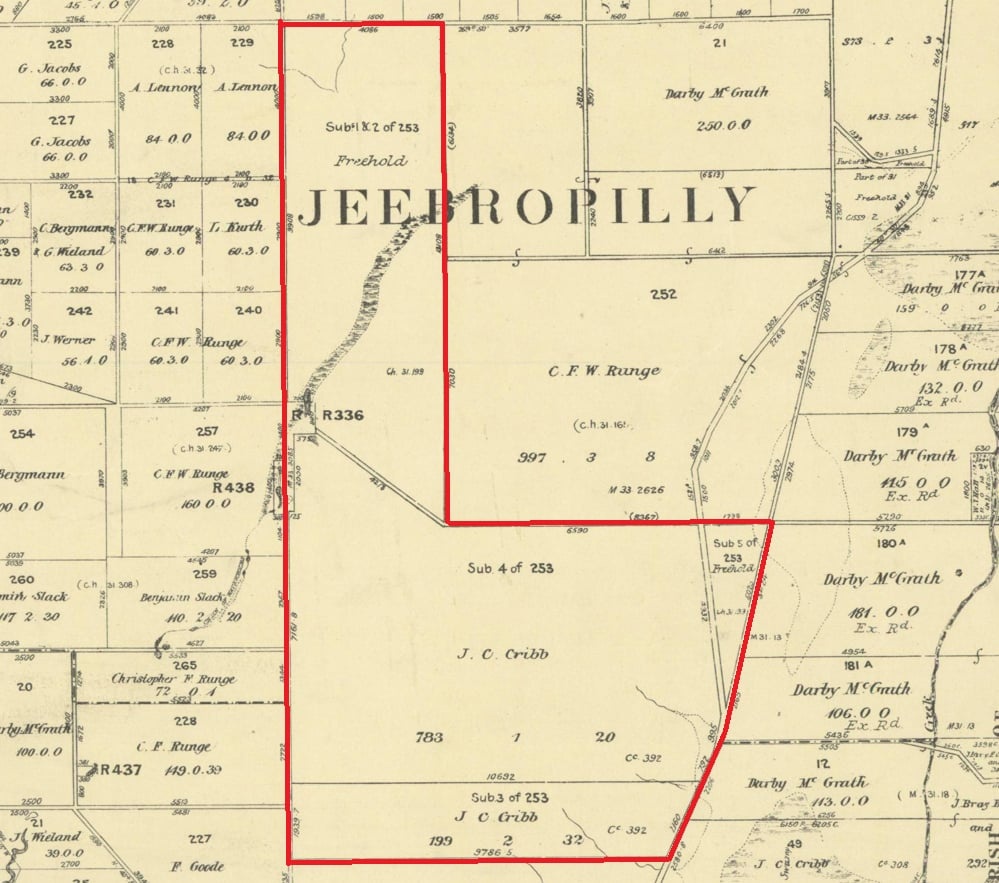
In 1907, James Clarke Cribb acquired 316 hectares of prime grazing land that extended to the south and to the north to Coopers Road. In the 1930s, this land was valued at £384, or $44,000 in today’s money.
The block was subsequently owned by William Thomas Denman, who passed away in 1939.
On April 13, 1940, it was reported that local farmer Albert Theaker acquired 130 hectares, which ultimately formed the basis of the motorsport complex.
Theaker passed on August 22, 1977, and he is remembered by the park at the front of the complex that has been named in his honour.
That particular park was constructed in 1975 and has now been developed for casual free camping.
To facilitate the purchase of the block, the Moreton Shire Council sought a grant from the Gough Whitlam Federal Government under the Regional Development and Employment Scheme, or RED Scheme, which saw it obtain the freehold for sporting and recreational purposes.
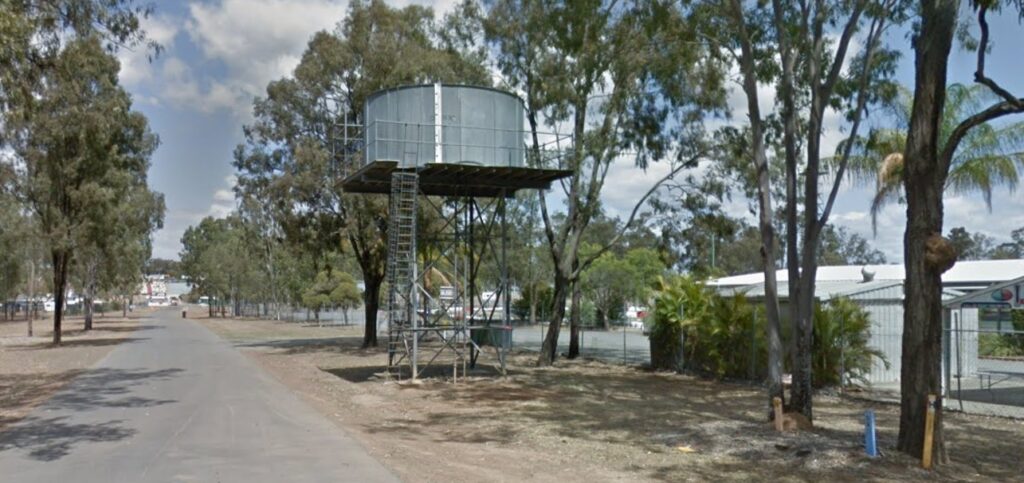
Image: Google Street View
The Council subsequently installed a bore near Warrill Creek and ran a line under the highway to a pump station and tank near the kart track, which remains in place to this date.
Subsequently, a water main was run from the nearby cemetery to the tank, with the source of that pipe being back at the vehicle inspection bay back near the Amberley BP.
Essentially located in the sticks, the block was perfect for making loud sounds—the area fell within the noise buffer of the Amberley Air Force Base, while various coal mines were scattered throughout the area, including the adjacent Ebenezer Mine, which came online in 1986.
While the Ipswich and West Moreton Auto Club is reported to have been casually using land in the area sporadically, seemingly, the block went very close to having an entirely different twang…
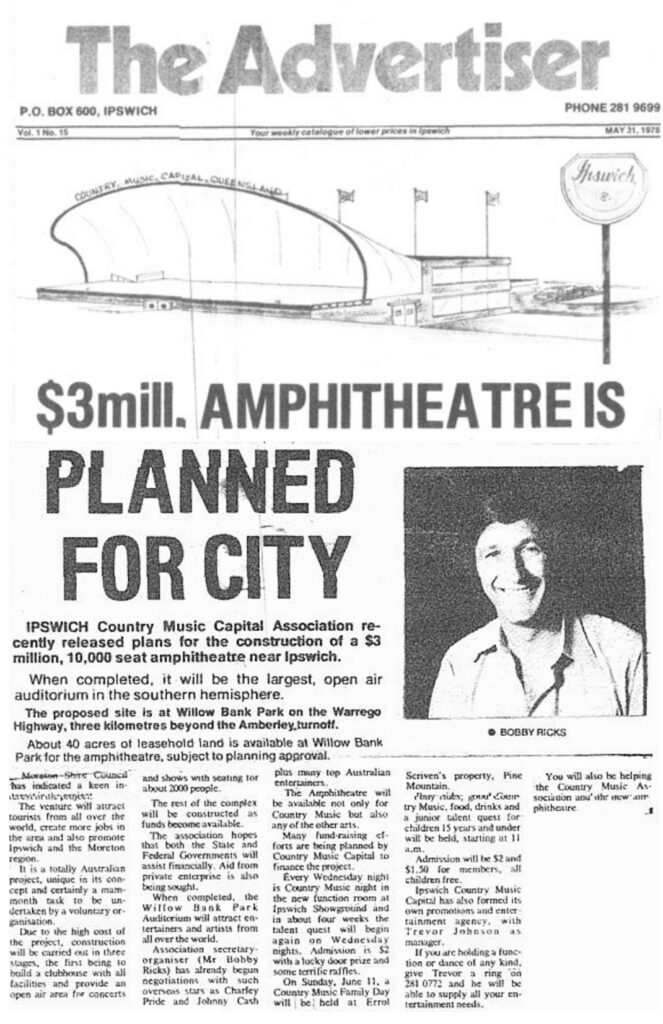
Country Music Capital
Ipswich, in the 1970s, was making a name for itself as the capital of country music in Australia.
Come May 1978, the local press carried front-page stories announcing an ambitious $3 million country music-centric 10,000-seat amphitheatre, which was set to be the largest of its type in the southern hemisphere.
With 16 hectares set aside for the project in the Willowbank area, it was to be staged in three parts, with the bulk of the work carried out when funds became available.
To be known as “Willow Bank Park”, it was hoped that State and Federal Funding would complement private investment.
The Country Music Capital Association name-dropped Charley Pride and Johnny Cash as potential acts, with the facility to ultimately become a country music tourist destination, like Opryland Park in Nashville.
To be at the scale of Dreamworld, the venue would feature rides with concessions for sale, interactive displays, such as instruments being made, and various shows performed during the day.
Ultimately, the project came to nothing, with both Tamworth and Gympie putting their hands up to be centres for country music.
However, since 2015, the modern motorsport precinct has been annually transformed into a country music mecca, with the CMC Rocks festival taking over the area as the biggest festival of its type in Australia.
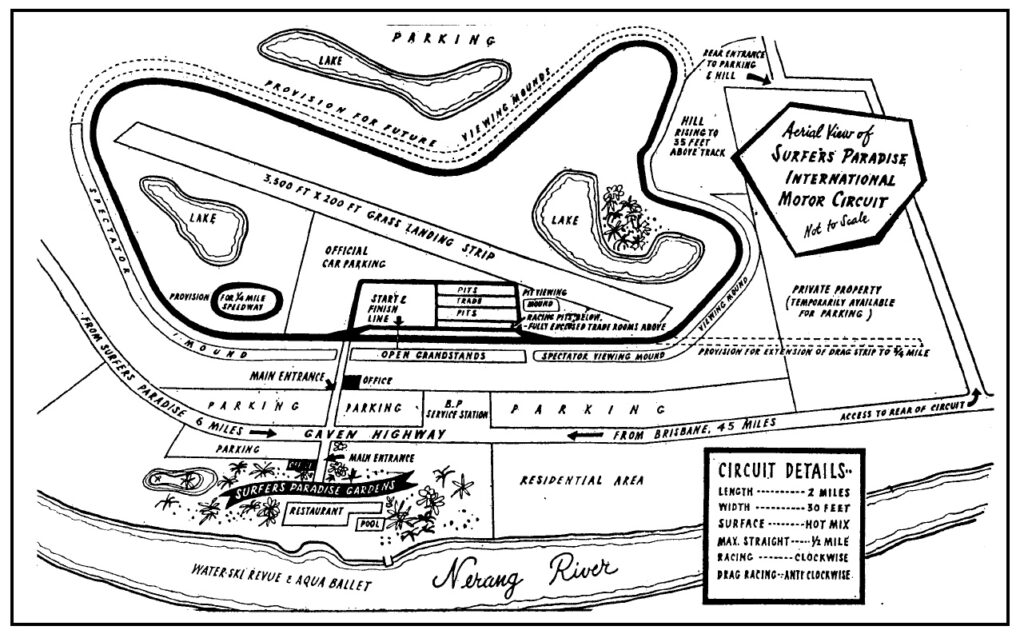
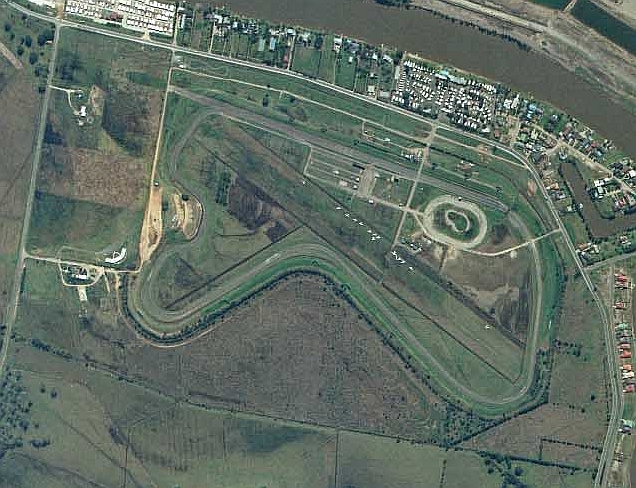
Needing a Place to Race
Elsewhere in Southeast Queensland, by the early 1980s, the writing was on the wall for Surfers Paradise International Raceway.
The venue was dual-use. Outside of the wickedly fast race circuit, the front straight was run in the reverse direction for drag racing, just like the early application of Eastern Creek—and like the Sydney facility, there were issues.
Firstly, the drag racers were not necessarily receiving the dates they desired due to the packed booking sheet for the venue.
Additionally, money wasn’t being spent on facilities, which by the 1980s were aging.
Bouncing around between owners, the site was mooted as a potential home for the Gold Coast Casino, which ultimately landed in downtown Broadbeach.
Track preparation was an issue for the ever-increasing speeds and needs of drag racing, as it was to become at Eastern Creek when quarter-mile action ceased there in 1997 – traction compounds were hard to handle in the wet for circuit users.
Additionally, the venue was fairly well laid out as a racetrack, but it was clunky for drag racing—access to the staging lanes was a chore, a process slightly alleviated by the ploughing of a dirt road behind the speedway on the inside of turn one.
Furthermore, tow cars were forced to use the drag strip proper, which caused multiple issues over the years—a dedicated drag strip would solve many of the problems experienced at Surfers.
Finally, an unfortunate accident at the 1981 Nationals truly set the wheels in motion for a revolution within the sport.
The Super Sedan Escort van of Canberra’s Glen Burns broke an axle and wiped out the Christmas tree – farcical scenes ensued, with organisers scrambling to find light bulbs, a scene they never wanted to see repeated.
Keith White, a Queensland Drag Racing Association (QDRA) member, was the Surfers Paradise International PR officer until he departed in 1980 to work at Radio 4BH.
By chance, at a Chamber of Commerce Meeting in Ipswich, White connected with Moreton Shire Deputy Mayor John Harris, which lit the spark to bring drag racing and motorsport to Willowbank.
At this time, local Moreton Shire Ward Councillor Jeff Cooper linked with White, John ‘Stomper’ Winterburn and Dennis Syrmis from the drag racing fraternity to inspect Willowbank’s suitability for a drag strip.
Dignitaries from the Shire also visited an event at Surfers Paradise to get a feel for the sport.
Subsequently, the wheels were set in motion for the first major tenant in the precinct, with Cooper pushing the barrow for Willowbank Raceway on multiple fronts through the council.
As an aside, Cooper also happened to own the nearby Willowbank caravan park.
Winterburn became Willowbank’s President, White the Vice-President, and Syrmis the General Manager.
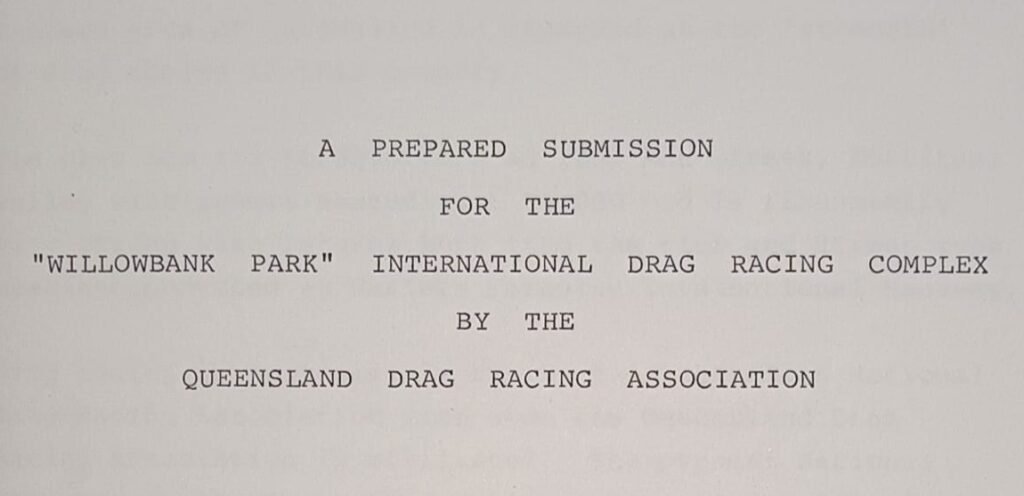
The original submission from the QDRA laid out the plans for the facility.
- Drag racing was a fast-growing sport, but it needed a place to race, with the future of the Surfers Paradise venue in doubt.
- The Cunningham Highway at the facility’s doorstep would serve it well with a customer base from Warwick to Toowoomba, Dalby and Brisbane, complimenting the Surfers facility.
- These visitors would spend considerable time and money in the local area.
- The club’s good standing in the media would serve the project well.
- Street meetings had already proved successful in getting hooning off the roads.
- Immediate funding would come through debentures from within the club membership base.
- State government support would also be sought.
- Once the facility was operational, sponsorship would then kick in.
- The venue would provide little interference with passing traffic on the highway by being located back from the road.
- Street meets were envisaged to be operational within 12 months, and the facilities were to be developed to an international standard in stage two of the project.
- That initial international standard would be achievable with an estimated outlay of $225,000, with expenditure over the first five years forecast to be $400,000.
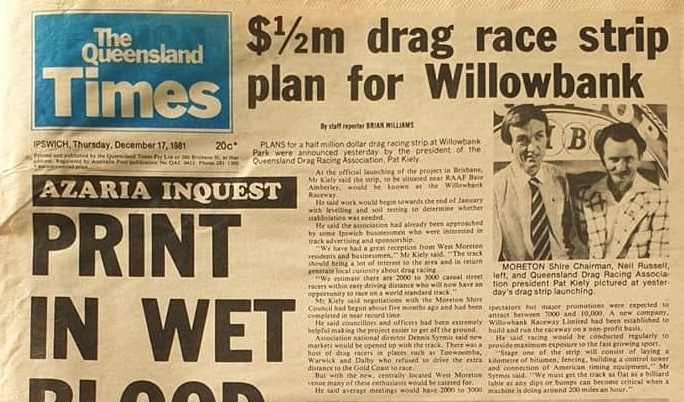
The project was first featured on the front page of the Queensland Times on December 17, 1981.
“Willowbank was kept quiet for a long time until it was pretty well signed up and sealed… there were a lot of naysayers. We saw the need for this and had the opportunity to do it. Building the track ourselves was hard work. We would get out there, draw up a job list and hand out the work as volunteers came in. It was four years of our lives, with hardly a weekend off. But it was great fun. We slept in tents and in the backs of cars in the early days, and then, as buildings began to go up, we had more salubrious accommodation out there.”
John Winterburn to the Elapsed Times
The first sod at the facility was turned in 1982, with help coming from out of the woodwork.
Councilors Cooper and Harris were staunch advocates of the project. Shire Chairman Neil Russell was also heavily involved and was actually present on the tools on the project’s opening day of work.
During those weekend working bees to construct the facility, equipment was often borrowed from the Shire and seamlessly returned on Monday morning – the council, in a practical way, paved the way for progress.
At the time, the locality was known as Drome View, with reference to the nearby RAAF Base; however, Cooper assisted in getting the area’s name officially changed to Willowbank, which refers to an original farm in the area.
Long-time Willowbank Raceway board member Lex Swayn had the honour of naming the road entering the precinct Champions Way, a rather apt title for the gateway to what became one of the best drag strips outside of the USA.
Swayn was the long-term editor of the Elapsed Times track newspaper, which at its peak was a full-colour, glossy 64-page magazine with a circulation of some 9,000 copies.
It was a tough grind to get the facility up and running, with the fledgling club constructing the supporting infrastructure first before laying down the strip—a move in contrast to many others who ran short of cash before putting amenities into place.
The final hurdle was to secure a $250,000 loan to pay for the paving of the strip, funding which was proving difficult to obtain.
Bruce Casos, who worked with the Moreton Shire Council and was active in the drag racing scene, was key to sorting out the quandary.
Casos set up a meeting with Bill Gunn, the straight-shooting Queensland Deputy Premier and local member who had taken a keen interest in the project’s progress.
Following a short meeting between Gunn, Syrmis, and Winterburn, a call was made to the ANZ branch in Fortitude Valley.
Despite a pessimistic outlook after repeated knockbacks, the track received its funding on the condition that seven houses were pledged as collateral.
Stepping up to the plate from the track’s committee, the “Willowbank Seven” raised their hands, with the rest, they say, being history.
Ultimately, that 10-year loan was paid back well ahead of time.
Gunn was also instrumental in getting a turning lane built on the Cunningham Highway, allowing safer access to the precinct, with his efforts in assisting the project seeing him invited to open the track officially.
By starting the greenfield project with a blank canvas, Willowbank could draw on the best elements of other facilities of the day while remaining a not-for-profit entity, with surplus funds pumped back into the development of the property.
“There are things that we would do differently if we were starting today. We always intended to run the strip from west to east to avoid running into the setting sun as we had at Surfers and because of the big fall in the track after the finish line, but digging down far enough to have the braking area the same level as the racing surface was far beyond our capacity to raise funds at that time. In fact, we only just managed to get the $250,000 needed to do the basic track as it is now.”
John Winterburn to the Elapsed Times
Now, Willowbank has the longest braking area in Australia, measuring some 750m from the finish line to beyond the catch net system.
Willowbank Raceway opened on September 28, 1985, above. While other drag racing facilities along the eastern seaboard came and went, Willowbank was the glue that held the sport of drag racing together.
For a couple of years, the two strips at Willowbank and Surfers Paradise ran complementary programs with Winterburn the meeting director at both venues. However, by the time the Gold Coast track shut in August 1987, the timing was almost perfect—Willowbank was, by this stage, standing on its two feet and capable of handling bigger meets.
Had the closure come earlier, the new venue wouldn’t have been of the standard to accept the major events of the day, and had it lasted longer, then both would have struggled financially.
The Surfers’ closure was sudden—it didn’t even get a farewell meeting—but it was later revived in 1993 for the low-key police-initiated Blue Light Association “Operation Drag.”
The Winternationals moved west, and the first event took place at their new home on June 12, 1988, and Willowbank was ready for the occasion.
Ultimately, the event has become the biggest of its type outside of North America.
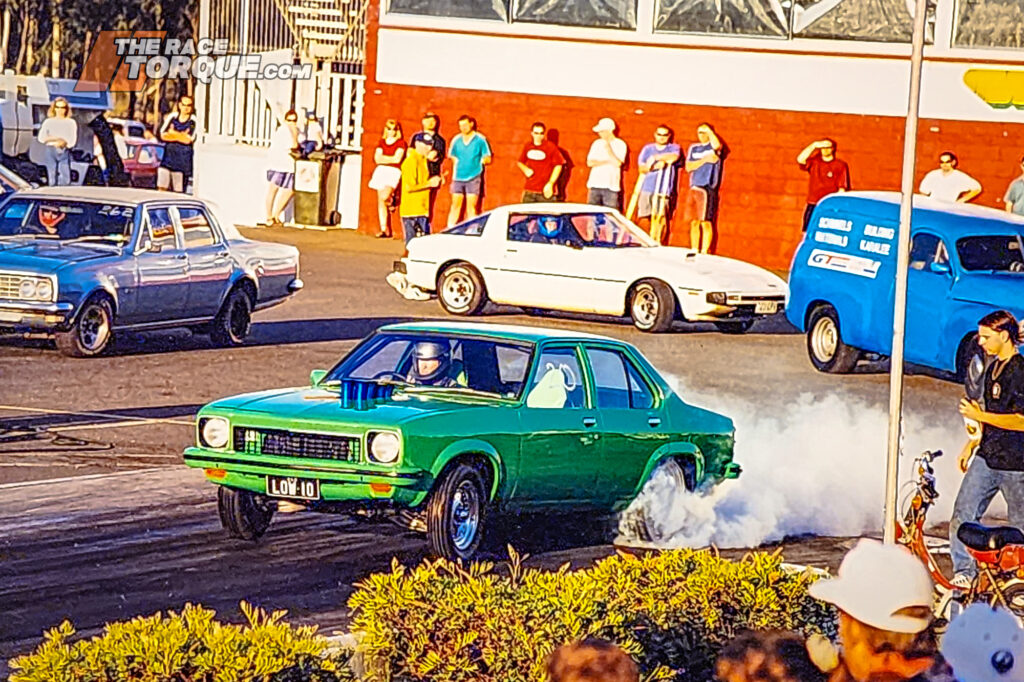
The venue has produced many innovations over the years, including in 1986 when the track introduced a three-amber tree, an Australian first, with the shorter light sequence easier for competitors with low rooflines to see. It has ultimately become the standard.
Then, in 1987, the facility installed Australia’s first concrete launch pads, which were extended over the years.
Willowbank also led the way with reaction timers, with information on timecards constantly improving over time.
Track lights were installed in February 1986 and proved to be a revelation in catering for major events day and night, taking advantage of the area’s favourable weather conditions throughout the year. They have subsequently been upgraded multiple times.
In 1988, the readout boards were installed near the finish line, which featured reaction times from the outset in difference to many other venues, with the extra data keeping fans informed, while in 1992, the venue invested in the nation’s first jet-powered track drier.
The first 23-row high metal grandstand was installed that same year and the structure was extended the following. Plastic seating is available for 360 spectators, while the entire structure can accommodate 4,500 fans at big meets.
In 1995, the $500,000 corporate suite was constructed behind the start line, which was joined in 1998 by a $70,000 Corporate Club on the start line, while in 1999, works kicked off to raise the grass spectator mound and double its length.
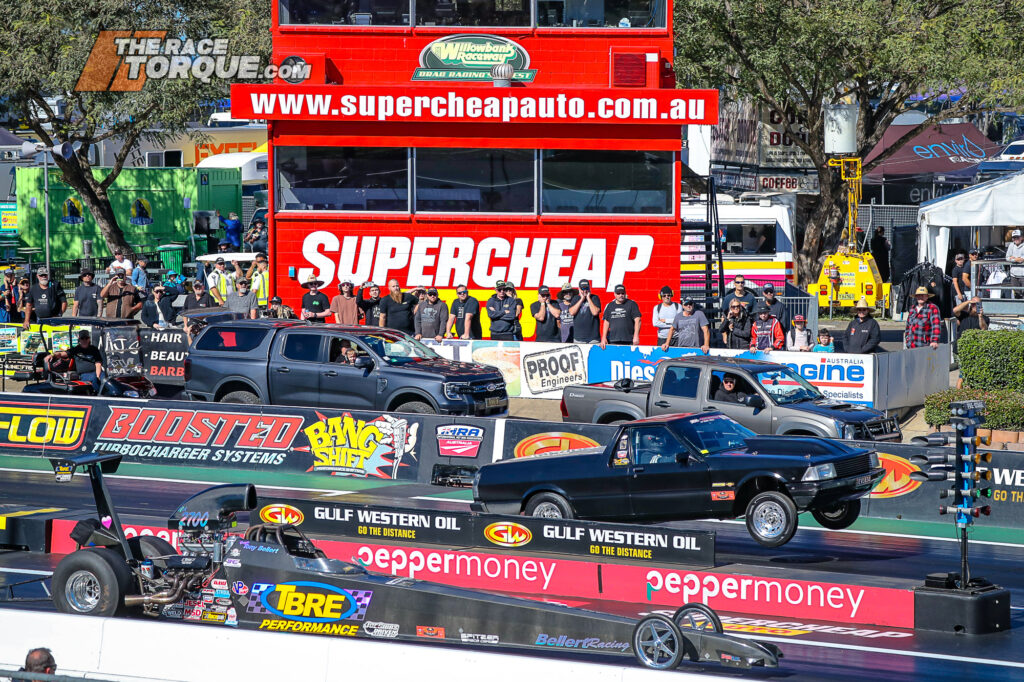
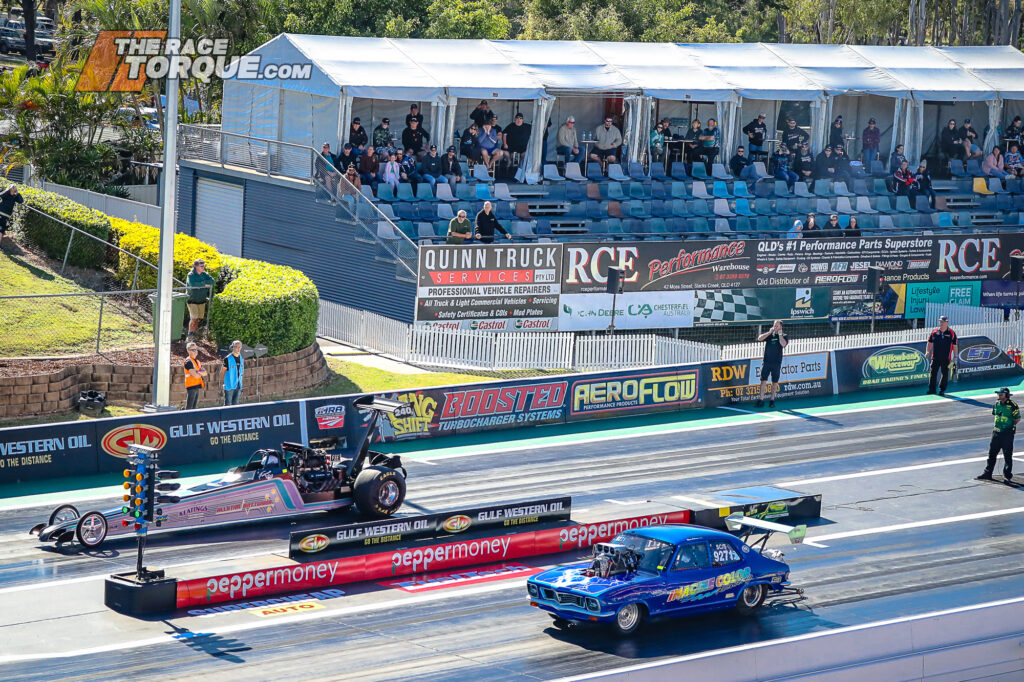
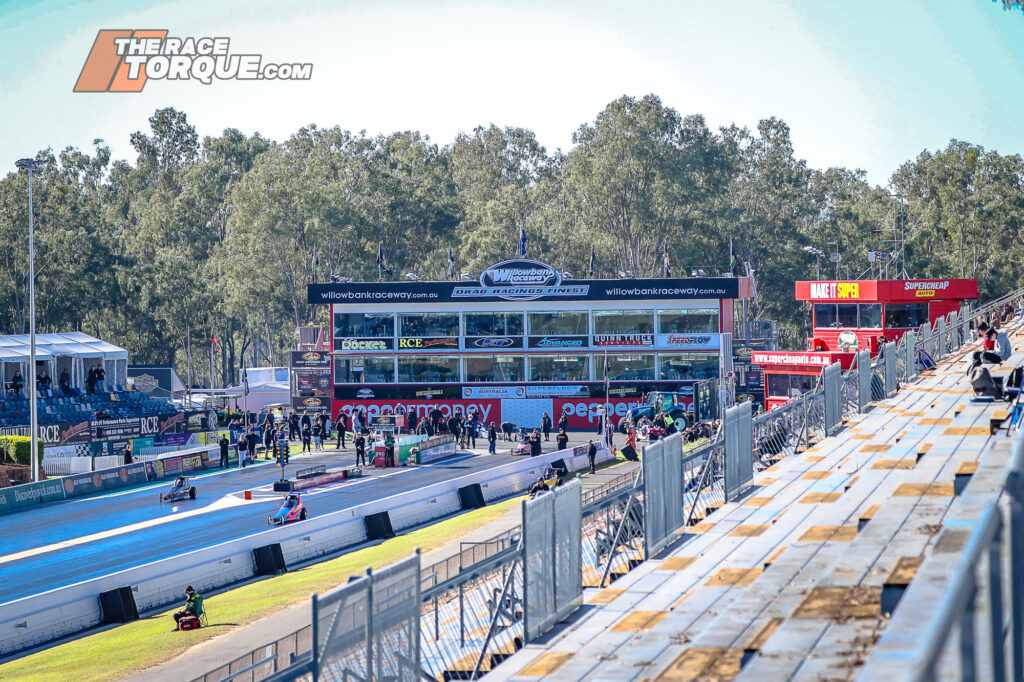
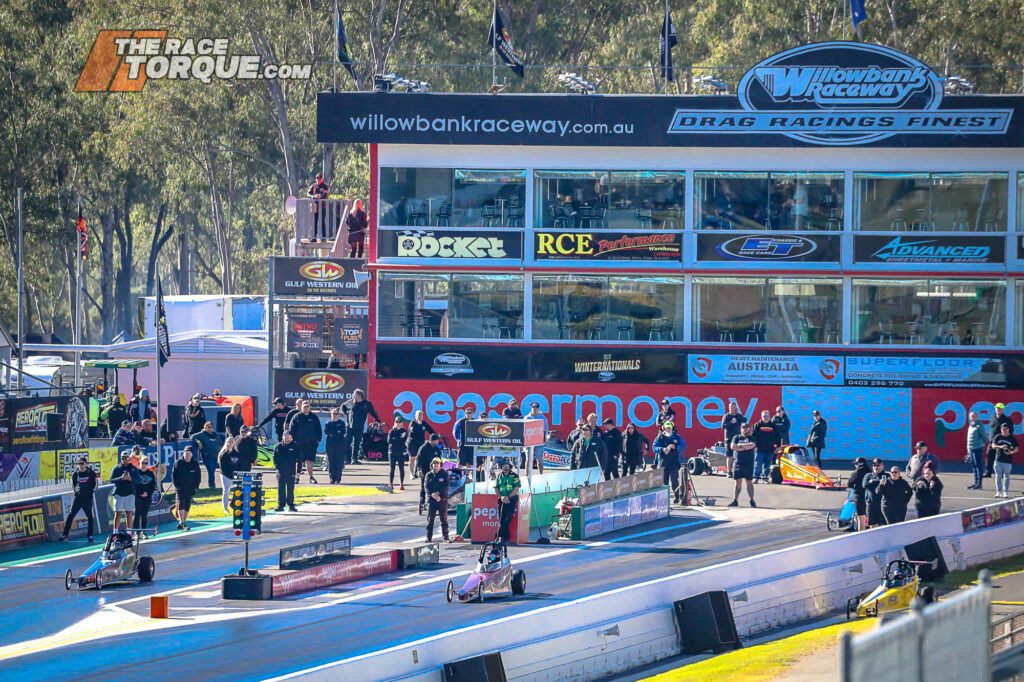
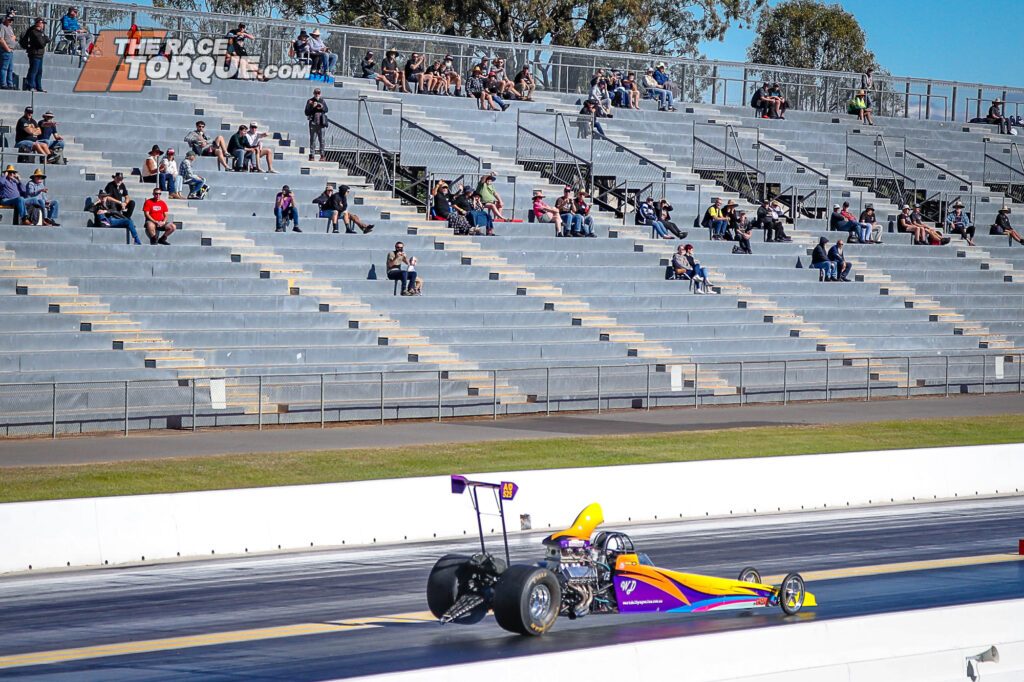
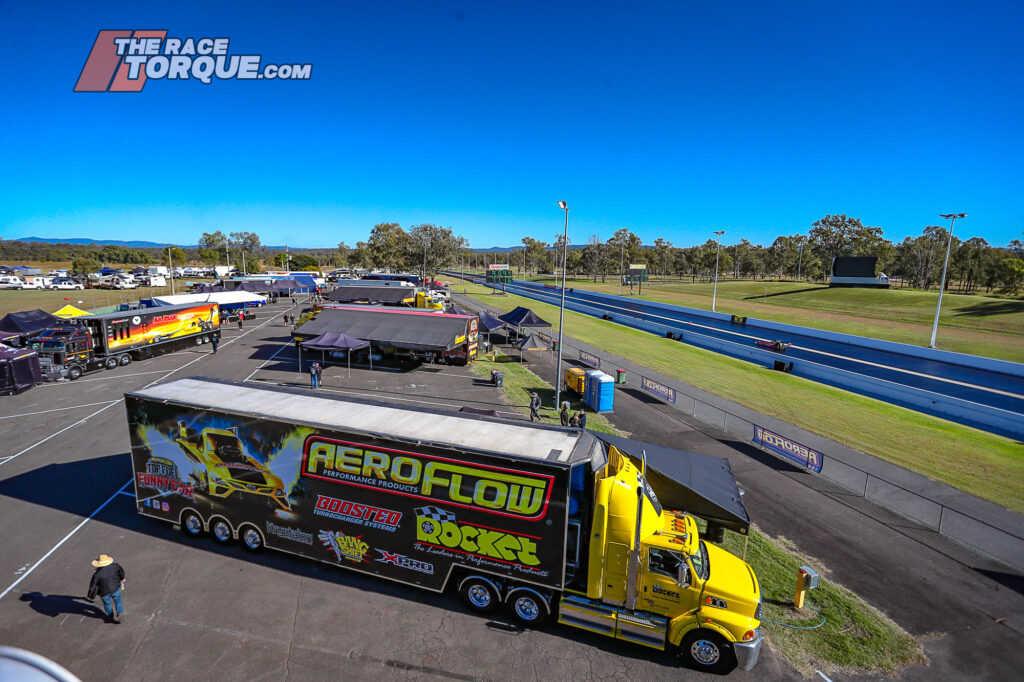
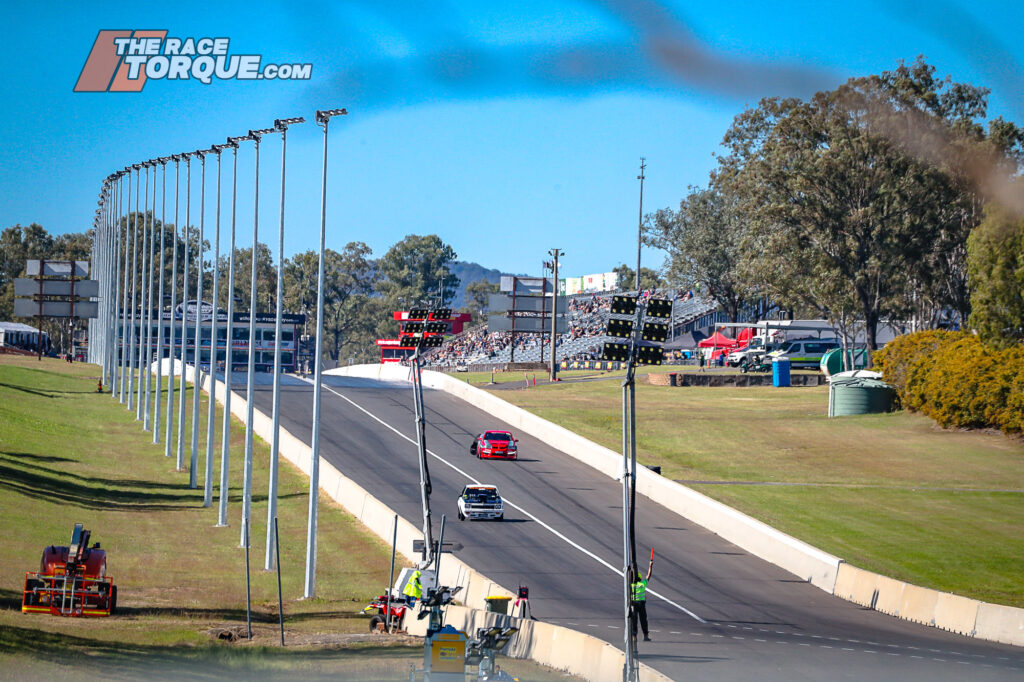
Also, in 1995, the track got ahead of the curve by being the first facility to establish a website, while that year, the City of Ipswich celebrated the venue when it was awarded the keys to the city.
The $150,000 Group 1 pit area was sealed and powered in 1996, the service road was installed in front of the grandstand in 1995, with the entire road network reworked in 1997 at a cost of $100,000.
In 1998, $250,000 was invested in the classifying building and eight-lane access road to the strip.
In 2002, a million-dollar facility upgrade included improvements to the racing surface, with the concrete safety barriers raised to 1,100mm for the entire length of the strip.
Additionally, at this stage, a 132-metre extension was made to the emergency braking area, taking it right up to the sand trap, while the pits were also redeveloped.
All told, the Queensland Government contributed $365,256 to the project.
In 2019, extensive safety works, including a new net system, were carried out in the strip’s emergency braking area.
Recently, the venue underwent an $11 million upgrade, including changes to the racing surface, lighting, and amenities, which prepares the venue well for the future.
Outside of events such as the CMC Rocks festival, the venue has a range of current-day uses, including low-key rally sprints, driver training, Police motorcycle training, and even RAAF dog training.
Next Up: We take a deep dive into the history of the Ipswich Motorsport Precinct…



